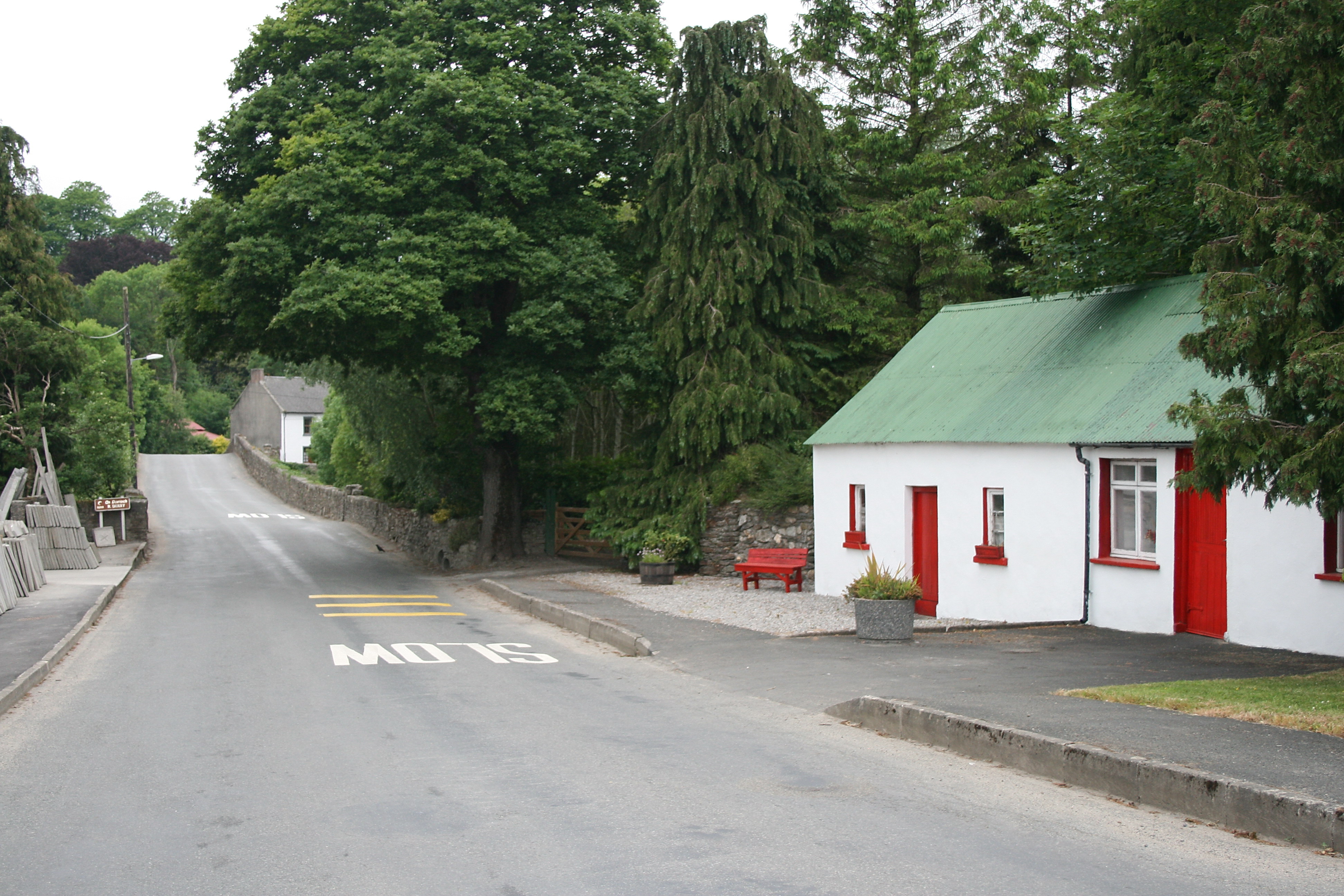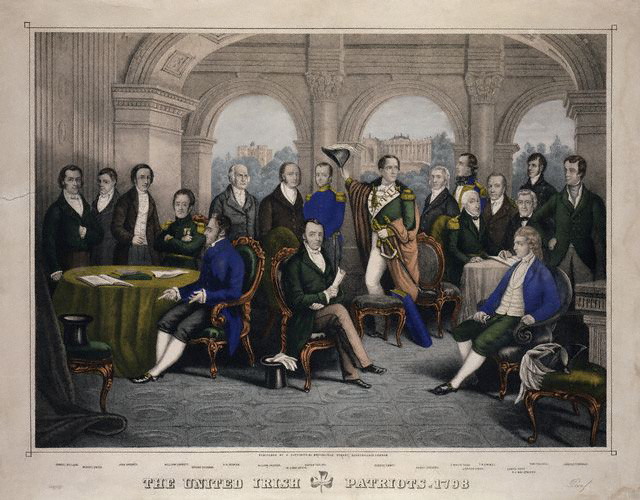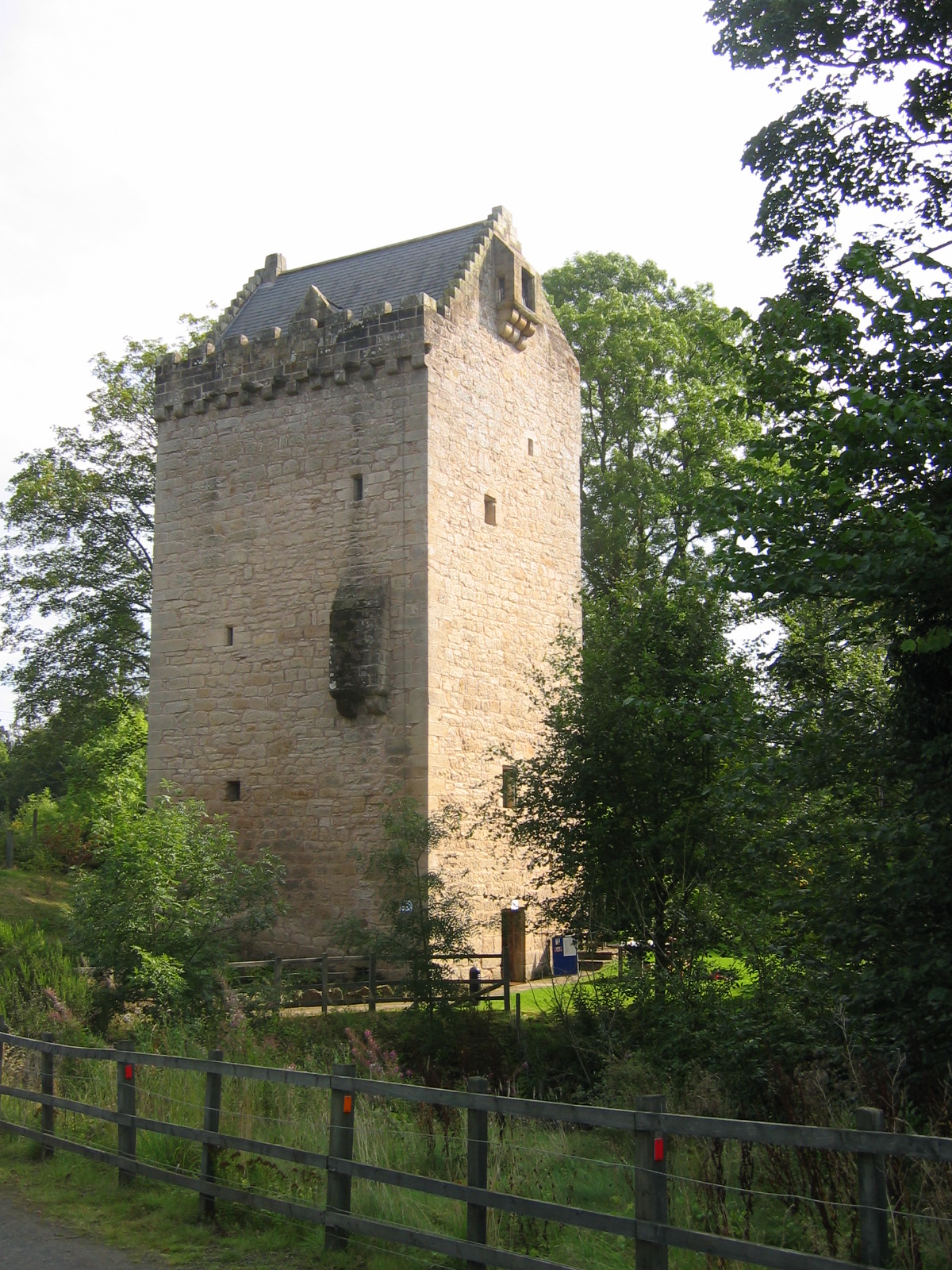|
Clonegal
Clonegal, officially Clonegall ( ; ), is a village in the southeast of County Carlow, Ireland. It is in a rural setting, close to the border between counties Wexford and Carlow, from Bunclody, County Wexford and from Carlow town. It is just over a mile north of where the River Slaney and the River Derry meet. Clonegal has a much smaller "twin" village across the River Derry in County Wexford, Watch House Village. The village is served by a primary school, and is the centre of an agricultural hinterland. History Evidence of ancient settlement in the area includes ringfort, bullaun stone and holy well sites in the surrounding townlands of Clonegall, Abbeydown and Huntington. Huntington Castle, also known as Clonegal Castle, is a 17th-century tower house close to the village centre. Built by Laurence Esmonde, 1st Baron Esmonde on the site of an earlier (possibly 15th century) structure, Huntington Castle was further extended in the 18th and 19th centuries. Clonega ... [...More Info...] [...Related Items...] OR: [Wikipedia] [Google] [Baidu] |
County Carlow
County Carlow ( ; ) is a Counties of Ireland, county located in the Southern Region, Ireland, Southern Region of Ireland, within the Provinces of Ireland, province of Leinster. Carlow is the List of Irish counties by area, second smallest and the List of Irish counties by population, third least populous of Ireland's 32 traditional counties. Carlow County Council is the governing Local government in the Republic of Ireland, local authority. The county is named after the town of Carlow, which lies on the River Barrow and is both the county town and largest settlement, with over 40% of the county's population. Much of the remainder of the population also reside within the Barrow valley, in towns such as Leighlinbridge, Bagenalstown, Graiguenamanagh, Tinnahinch, Borris, County Carlow, Borris and St. Mullins, St Mullins. Carlow shares a border with County Kildare, Kildare and County Laois, Laois to the north, County Kilkenny, Kilkenny to the west, County Wicklow, Wicklow to the east ... [...More Info...] [...Related Items...] OR: [Wikipedia] [Google] [Baidu] |
River Derry
The River Derry () is a large river in the southeast of Leinster, Ireland, a tributary of the River Slaney. It rises just south of Hacketstown, County Carlow. It flows southeast to Tinahely, being accompanied by the R747 regional road for the distance. South of Tinahely it turns sharply and flows southwest through Shillelagh, briefly forming the border between County Wicklow and County Wexford, before becoming the border between County Wexford and County Carlow. It flows under Clonegal Bridge at a point where it divides Clonegal Clonegal, officially Clonegall ( ; ), is a village in the southeast of County Carlow, Ireland. It is in a rural setting, close to the border between counties Wexford and Carlow, from Bunclody, County Wexford and from Carlow town. It is ju ..., County Carlow to the west from Watch House Village, County Wexford, to the east. A few kilometres further downstream it flows into the River Slaney. Derry Water River is a separate tributary, whi ... [...More Info...] [...Related Items...] OR: [Wikipedia] [Google] [Baidu] |
Huntington Castle, Clonegal
Huntington Castle, also known as Clonegal Castle, is a castle in Clonegal, County Carlow, Ireland, built in 1625. It is now a private house open to the public for guided tours throughout June, July, August and September. History The structure was originally a "plantation castle", used for defensive purposes during the plantation of the area in the early 17th century. The original tower house, which served as a garrison, was built in the 15th century as a stronghold for the Caviness family, an old Irish clan. Due to the strategic importance of the village of Clonegal during the Cromwellian conquest of Ireland because of its location on the road between Dublin and Wexford, the castle was captured by Oliver Cromwell as he marched on Kilkenny in 1650. The house was extended circa 1880 to include a seven bay two storey wing. The house and grounds were redecorated by Manning Durdin Robertson in 1933 in a modern style including a new boat house, removal of battlements and reconstr ... [...More Info...] [...Related Items...] OR: [Wikipedia] [Google] [Baidu] |
Watch House Village
Watch House Village is a small village in County Wexford, Ireland, on the River Derry. It is a twin village of the much larger Clonegal in County Carlow County Carlow ( ; ) is a Counties of Ireland, county located in the Southern Region, Ireland, Southern Region of Ireland, within the Provinces of Ireland, province of Leinster. Carlow is the List of Irish counties by area, second smallest and t ... on the other side of the river, which forms the county boundary. See also * List of towns and villages in Ireland External links Carlow County Council - 2007 Clonegal Draft Local Area Plan(refers to coordination between Wexford and Carlow county councils on development of Clonegal and Watch House village) Towns and villages in County Wexford {{Wexford-geo-stub ... [...More Info...] [...Related Items...] OR: [Wikipedia] [Google] [Baidu] |
Society Of United Irishmen
The Society of United Irishmen was a sworn association, formed in the wake of the French Revolution, to secure Representative democracy, representative government in Ireland. Despairing of constitutional reform, and in defiance both of British Crown forces and of Irish Sectarianism, sectarian division, in 1798 the United Irishmen instigated Irish Rebellion of 1798, a republican rebellion. Their suppression was a prelude to the abolition of the Parliament of Ireland, Irish Parliament in Dublin and to Ireland's incorporation in a United Kingdom of Great Britain and Ireland, United Kingdom with Kingdom of Great Britain, Great Britain. Espousing principles they believed had been vindicated by American Revolution, American independence and by the Declaration of the Rights of Man and of the Citizen, French Declaration of the Rights of Man, the Presbyterian Church in Ireland, Presbyterian merchants who formed the first United society in Belfast in 1791 vowed to make common cause with ... [...More Info...] [...Related Items...] OR: [Wikipedia] [Google] [Baidu] |
Irish Rebellion Of 1798
The Irish Rebellion of 1798 (; Ulster Scots dialect, Ulster-Scots: ''The Turn out'', ''The Hurries'', 1798 Rebellion) was a popular insurrection against the British Crown in what was then the separate, but subordinate, Kingdom of Ireland. The main organising force was the Society of United Irishmen. First formed in Belfast by Presbyterianism, Presbyterians opposed to the landed Protestant Ascendancy, Anglican establishment, the Society, despairing of reform, sought to secure a republic through a revolutionary union with the country's Catholic Church, Catholic majority. The grievances of a rack-rented tenantry drove recruitment. While assistance was being sought from the French First Republic, French Republic and from democratic militants in Britain, martial-law seizures and arrests forced the conspirators into the open. Beginning in late May 1798, there were a series of uncoordinated risings: in the counties of County Carlow, Carlow and County Wexford, Wexford in the southeast ... [...More Info...] [...Related Items...] OR: [Wikipedia] [Google] [Baidu] |
Yeomanry
Yeomanry is a designation used by a number of units and sub-units in the British Army Reserve which are descended from volunteer cavalry regiments that now serve in a variety of different roles. History Origins In the 1790s, following the French Revolution and the rise of Napoleon Bonaparte, the perceived threat of invasion of the Kingdom of Great Britain was high. To improve the country's defences, Volunteer regiments were raised in many counties from yeomen. While the word "yeoman" in normal use meant a small farmer who owned his land, Yeomanry officers were drawn from the nobility or the landed gentry, and many of the men were the officers' tenants or had other forms of obligation to the officers. At its formation, the force was referred to as the Yeomanry Cavalry. Members of the yeomanry were not obliged to serve overseas without their individual consent. Early 19th century During the first half of the nineteenth century, Yeomanry Regiments were used extensively in ... [...More Info...] [...Related Items...] OR: [Wikipedia] [Google] [Baidu] |
Church Of Ireland
The Church of Ireland (, ; , ) is a Christian church in Ireland, and an autonomy, autonomous province of the Anglican Communion. It is organised on an all-Ireland basis and is the Christianity in Ireland, second-largest Christian church on the island after the Catholic Church in Ireland, Roman Catholic Church. Like other Anglican churches, it has retained elements of pre-Reformation practice, notably its episcopal polity, while rejecting the papal primacy, primacy of the pope. In theological and liturgical matters, it incorporates many principles of the Reformation, particularly those of the English Reformation, but self-identifies as being both Protestantism, Reformed and Catholicity, Catholic, in that it sees itself as the inheritor of a continuous tradition going back to the founding of Celtic Christianity, Christianity in Ireland. As with other members of the global Anglican communion, individual parishes accommodate differing approaches to the level of ritual and formality ... [...More Info...] [...Related Items...] OR: [Wikipedia] [Google] [Baidu] |
Laurence Esmonde, 1st Baron Esmonde
Sir Laurence Esmonde, 1st Baron Esmonde (1570?–1646), was an Irish peer who held office as governor of the fort of Duncannon in County Wexford. He was a leading Irish Royalist commander in the English Civil War, but was later suspected of disloyalty to the English Crown when he surrendered Duncannon Fort to the enemy. He was the ancestor of the Esmonde Baronets, although the barony died with him. Early life Esmonde was the second son of Walter Esmonde of Johnstown, Wexford, and his wife Margaret, daughter of Michael Furlong of Horetown. He converted to Protestantism in his twenties and served with credit against Spain in the Low Countries. In 1599, he was appointed to the command of 150 foot soldiers and was actively engaged during the rebellion of Hugh O'Neill; it appears from a letter of his to Lord Shrewsbury that he endeavoured to procure the assassination or banishment of O'Neill, but in this he was unsuccessful. His services were, however, rewarded with a knighthood. He ... [...More Info...] [...Related Items...] OR: [Wikipedia] [Google] [Baidu] |
Tower House
A tower house is a particular type of stone structure, built for defensive purposes as well as habitation. Tower houses began to appear in the Middle Ages, especially in mountainous or limited access areas, to command and defend strategic points with reduced forces. At the same time, they were also used as an aristocrat's residence, around which a castle town was often constructed. Europe After their initial appearance in Ireland, Scotland, the Frisian lands, Northern Spain and England during the High Middle Ages, tower houses were also built in other parts of western Europe, especially in parts of France and Italy. In Italian medieval communes, urban ''palazzi'' with a very tall tower were increasingly built by the local highly competitive patrician families as power centres during times of internal strife. Most north Italian cities had a number of these by the end of the Middle Ages, but few now remain, notably two towers in Bologna, twenty towers in Pavia and fourtee ... [...More Info...] [...Related Items...] OR: [Wikipedia] [Google] [Baidu] |
Townland
A townland (; Ulster-Scots: ''toonlann'') is a traditional small land division used in Ireland and in the Western Isles of Scotland, typically covering . The townland system is of medieval Gaelic origin, predating the Norman invasion, and most have Irish-derived names. However, some townland names and boundaries come from Norman manors, plantation divisions, or later creations of the Ordnance Survey.Connolly, S. J., ''The Oxford Companion to Irish History, page 577. Oxford University Press, 2002. ''Maxwell, Ian, ''How to Trace Your Irish Ancestors'', page 16. howtobooks, 2009. Townlands cover the whole island of Ireland, and the total number of inhabited townlands in Ireland was 60,679 in 1911. The total number recognised by the Placenames Database of Ireland as of 2014 was 61,098, including uninhabited townlands. Etymology The term "townland" in English is derived from the Old English word ''tūn'', denoting an enclosure. The term describes the smallest unit of land di ... [...More Info...] [...Related Items...] OR: [Wikipedia] [Google] [Baidu] |







